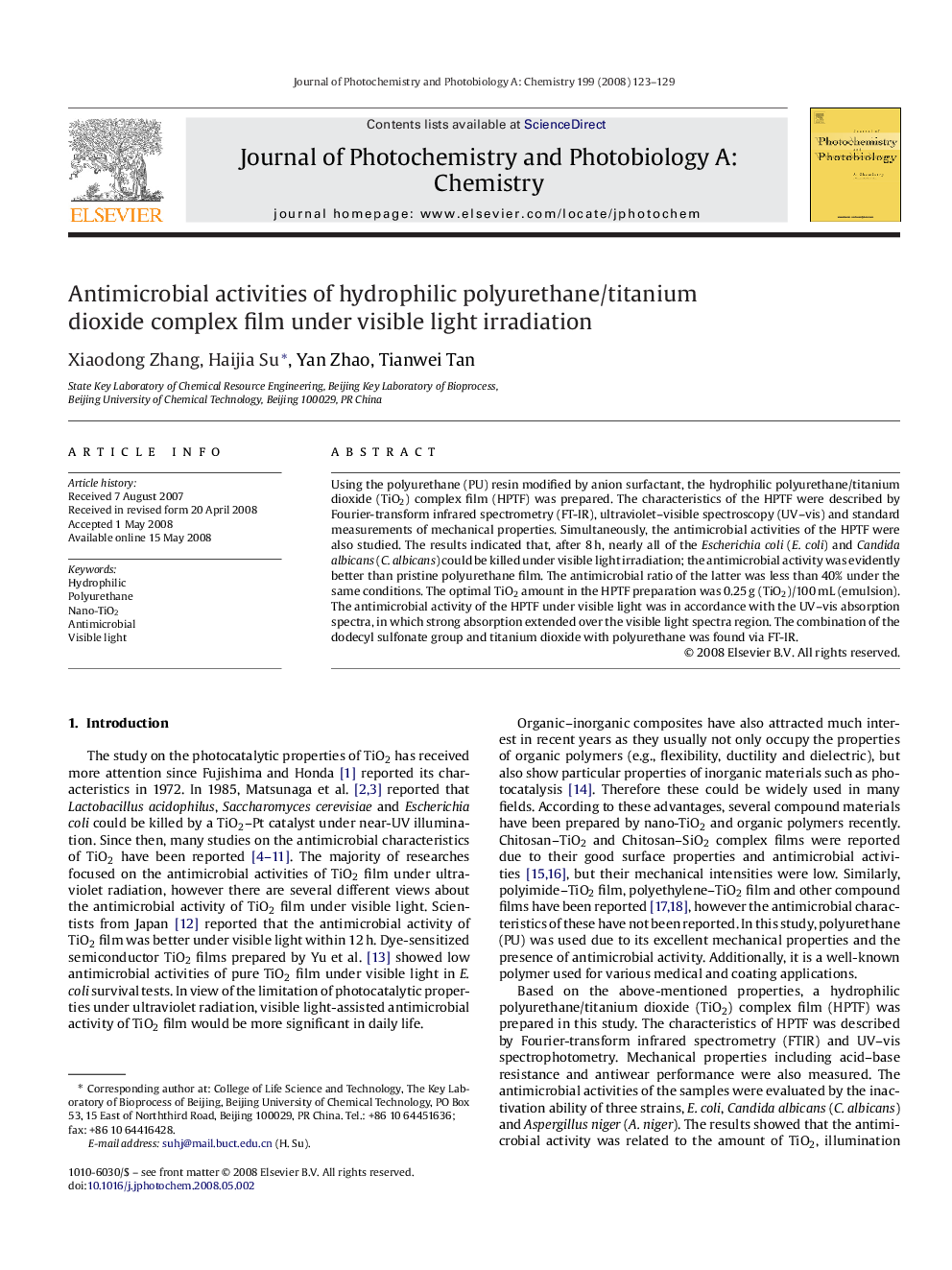| Article ID | Journal | Published Year | Pages | File Type |
|---|---|---|---|---|
| 29069 | Journal of Photochemistry and Photobiology A: Chemistry | 2008 | 7 Pages |
Using the polyurethane (PU) resin modified by anion surfactant, the hydrophilic polyurethane/titanium dioxide (TiO2) complex film (HPTF) was prepared. The characteristics of the HPTF were described by Fourier-transform infrared spectrometry (FT-IR), ultraviolet–visible spectroscopy (UV–vis) and standard measurements of mechanical properties. Simultaneously, the antimicrobial activities of the HPTF were also studied. The results indicated that, after 8 h, nearly all of the Escherichia coli (E. coli) and Candida albicans (C. albicans) could be killed under visible light irradiation; the antimicrobial activity was evidently better than pristine polyurethane film. The antimicrobial ratio of the latter was less than 40% under the same conditions. The optimal TiO2 amount in the HPTF preparation was 0.25 g (TiO2)/100 mL (emulsion). The antimicrobial activity of the HPTF under visible light was in accordance with the UV–vis absorption spectra, in which strong absorption extended over the visible light spectra region. The combination of the dodecyl sulfonate group and titanium dioxide with polyurethane was found via FT-IR.
